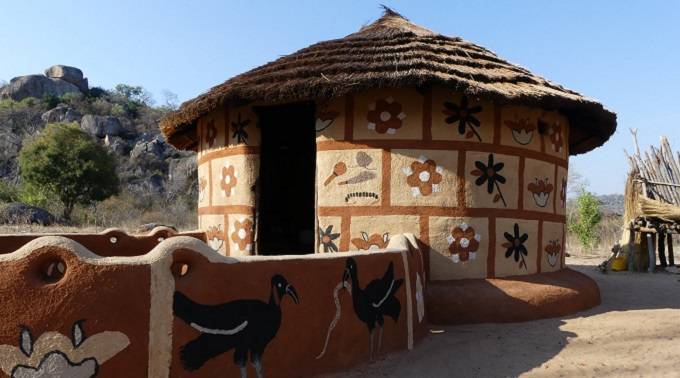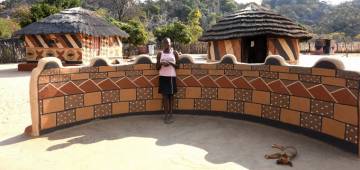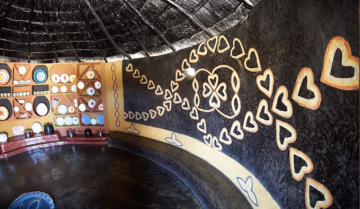Creative painting of homes for competition

Bongani Ndlovu, Showbiz Correspondent
THE women of Matobo district in Matabeleland South can teach their city counterparts valuable lessons with their intricate and beautifully painted homes that are dotted across their rural community.
Each year, these women paint their homes for the “My Beautiful Home/ Gcomba Indlu Ngobuciko Competition” run by Amagugu International Cultural Centre from April to September.
In the competition that has been held since 2014, it’s a race to see who can come up with the most eye-catching, well-crafted motifs of Ndebele culture painted around their homes and kitchens. Competition is stiff because the painting and designs are varied and the colours used are predominantly brown, black, red and white.
But what do they use to paint their homes? Well, they use what nature gives them, different shades of clay that is found in the countryside. Some use red clay as a base, ash to get white or mix it with the same clay to produce a lighter shade or even charcoal to get their black colour. All this is biodegradable because they start to paint just after villagers end their cropping season in April. When they are done painting, it’s normally just before the rain season around August-September, giving them enough time to admire their work and get praise from others.

It’s hard work though from conceptualising the design to finally putting it up on their mud and pole huts. What is great about this competition is that it’s a women’s affair. They are the ones who paint their own homes further preserving their culture through these paintings.
The finished product represents every woman’s varied character – the way they think, their mood and how they conceptualise the world around them.
The shapes of the homes vary as they are either round or zig zag. Amagugu director Pathisa Nyathi said: “The round shape represents the contour of the earth, sun, moon and any other planets. Everything the Africans built in medieval times were round in shape, be it their houses, kraals, shields or pots.

“For example, Great Zimbabwe, Khami Ruins, Old Bulawayo grass huts are all in a circular shape.” On the other hand, the zig zag part as Nyathi explained, is a chevron design. In one dimension, it looks like a simple upside down triangle, but in three dimensions, it becomes a cone shape. The chevron shape transforms to represent the women’s life giving organ, her womb. That is why the women’s participation in this painting is integral as they beautify the homes where they nurture life and the inside of kitchens from which where they nourish it.
However, with modernisation, some of these homes have taken the square shaped form. Most houses which are painted in the city are just plain, boring, some with bland shades. In other words, they lack identity as there’s no difference between them and the ones in the western world. The homes do not scream culture and do not show the deep African heritage.
So in order for Africans to retain some of their culture, they should turn to painting their homes to represent their heritage. It does not have to start and stop with Ndebele women as every culture in Zimbabwe has its own designs.











Comments